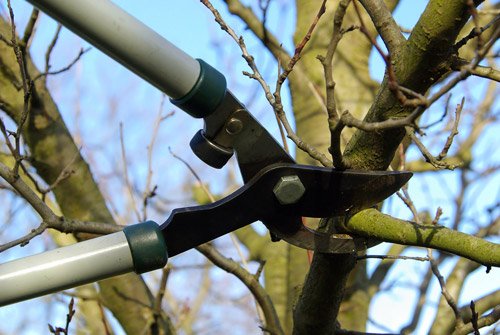Regular trimming is important for maintaining tree health and also for preventing problems associated with dead tree limbs, such as roof damage and landscape damage. However, if you are not trimming your tree correctly, you might be doing more harm than good. Read on to discover five common mistakes that homeowners make when trimming their trees.
1. Trimming at the Wrong Time
Many homeowners wait until their tree looks a bit overgrown and disheveled before they pull out the shears. But pruning your tree at the wrong time of year can have negative consequences. If you prune your tree when certain insects are active, the sap oozing from the fresh cuts may attract these insects, spreading disease to your tree. Pruning at the wrong time can also thwart blooming and fruit production.
Conifers and non-blooming trees are best pruned in late winter. If you have blooming trees, trim them just after they bloom in the spring. The one exception to these rules is for dead branches, which you can remove at any time of year – whenever you notice them.
2. Disregarding Sanitation
Trees, just like humans and animals, are susceptible to a number of different infectious fungi and bacteria. These pathogens are easily spread from tree to tree during pruning if you do not properly sanitize your shears. Wipe your shears down with rubbing alcohol between trees. Let them dry completely before you begin trimming another tree.
Proper cleanup is another key component of good sanitation. Do not just let the fallen branches and leaves sit on the ground beneath the tree, as they could become a harboring point for fungi and insects. Dispose of the debris in a pile far away from any trees.
3. Selecting the Wrong Branches
Proper pruning takes a lot more than just trimming away random branches to change the shape of the tree. If you do not pay close attention to which branches you remove, you will weaken the tree, and its shape may actually become less appealing over time.
Start by removing any dead or dying branches. Then remove branches that join the limb or trunk at weak, v-shaped angles. Try to remove thinner, smaller branches rather than thicker ones.
4. Cutting Through the Branch Collar
The portion of the branch closest to its base is known as the branch collar. This part of the branch contains a big bundle of vascular tissue. If you cut right through it, the tree will lose a lot of sap, and the wound will take a long time to heal.
Homeowners often cut right through the branch collar in an attempt to cut branches flush with the trunk. The best approach, however, is to leave behind a 1-inch stub, cutting just after the branch collar.
5. Using Dull Shears
If you use less expensive or well-aged shears, the blades are likely to be dull. Trimming a tree with dull blades creates rough wounds that your tree will have a harder time healing. You may accidentally damage the branch collar if you have to work hard and make several “chops” to cut through a branch.
If you plan on doing your own tree trimming, invest in a good pair of truly sharp shears, and have them sharpened once a year to keep them working well.
If you can manage to avoid the mistakes above, you’ll do a much better job of trimming your own trees. However, an even better approach is to hire an expert tree trimmer like those at Ross Tree Company. We specialize in keeping trees healthy and strong. Contact us today to schedule an appointment.

